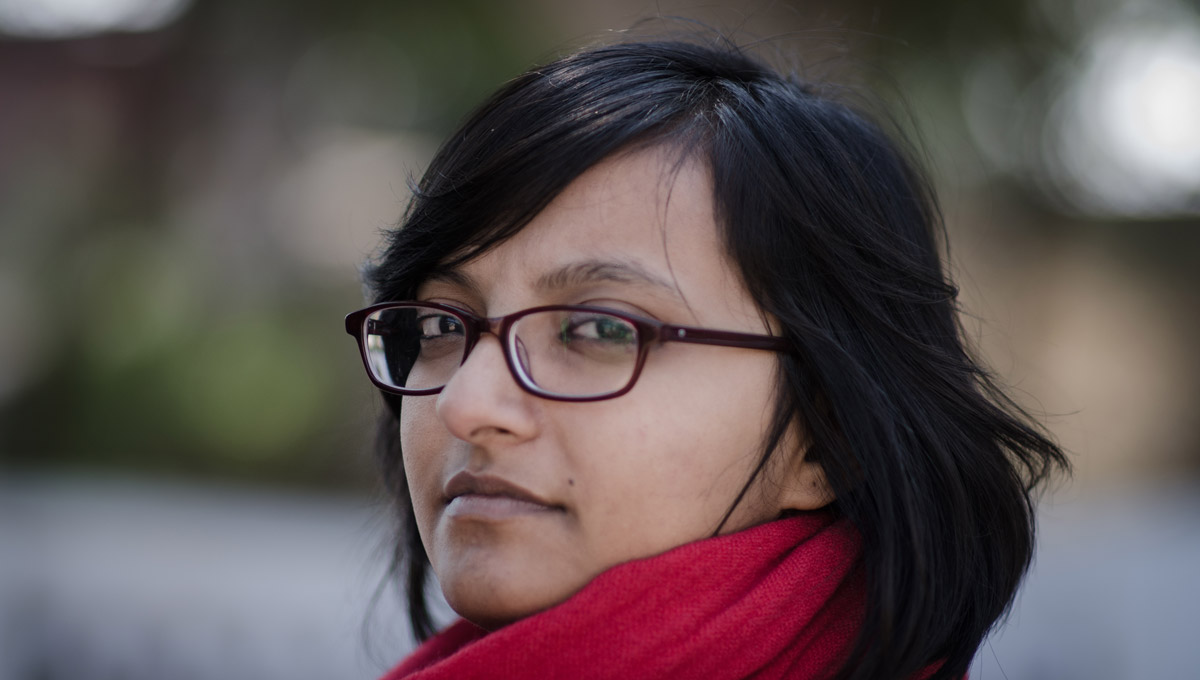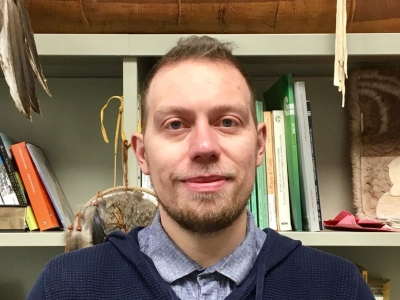By Leah Coppella
If you had told Aditi Singh a couple years ago that she would find a community in a research lab at Carleton University, she probably wouldn’t have believed you.
Singh is a master’s student in the Human-Computer Interaction program. Hailing from a small town in India, Singh hadn’t even considered Canada as an option for her master’s until she stumbled onto the website of Carleton’s Creative Interactions Lab.

Aditi Singh
“I saw the lab’s website and I really liked the work that they were doing, so I applied.”
But Singh’s enthusiasm dwindled on the day of her first class. Instead of getting the seven hours of sleep that most students need, Singh had been flying for almost a full day from New Delhi to Ottawa.
“I wasn’t feeling the best.”
But now she laughs, reflecting on how she had no clue she would find her second home in a research lab in a small building on the south end of Carleton’s campus.
A Background in Architecture
Singh’s background in architecture is what led her into tangible user interfaces. The convergence of this and her master’s program is what inspired her to develop her thesis on a shape-changing device for carpal tunnel syndrome.
Singh’s thesis on how non-intrusive reminders can help those struggling with repetitive strain injuries won third place in Carleton’s Three Minute Thesis competition (3MT) in March. While she considered exploring a rehabilitation device, in the research process she found that a break reminder for computer workers was more appropriate.
She uses a flower as an example. New technology could allow for a mechanical flower on a desk to wilt before a worker’s eyes. Once it’s withered, the worker gets the signal that it’s time to take a micro-break.
What makes Singh’s work different is the non-intrusive technology and her view that the design process should work in the real-world for real people.
Singh’s refreshing outlook meant she didn’t see many obstacles during her time at Carleton. Instead, she simply saw challenges in need of her time and effort.
Singh says that 90 per cent of that time and effort was conducted in the lab and.the lab culture gave her a sense of motivation. She recommends that those struggling with their research should talk to people around them with experience. In fact, this was the most memorable part of her time at Carleton.
“You can read as much as you want, but there are some things that are much easier to grasp when you talk to people . . . hanging out with ergonomic consultants when they were consulting their clients gave me a better idea of what was happening in the real context,” she says.
Empathizing with Users
Chatting in labs kept Singh enthusiastic about her research.
“You can have a down week, but you can’t (be down) for long. There’s always something you’re looking forward to, even if it’s just to talk about what you did last week,” she says. “I had this space to go and people who were there to help, so that kind of eased the transition.”
Singh hopes to start her career in Ottawa as a user experience researcher. But just like she had no idea that she would be in Canada this year, she’s reminding herself to stay open-minded.
“I’m trying to be somewhere where the company or the product cares for the people,” which is what her thesis is all about. “Somewhere where the design culture is mature enough to empathize with the users and get their opinions.”
Today, Singh is finishing some work in the same lab that she started in.
Reflecting on the person that she was on that first day, Singh says that while something may seem strange or unfamiliar at first, it will pass. And with an open mind, some time and effort, things eventually come together.
Spring Convocation is taking place from Monday, June 10 until Friday, June 14. The ceremonies will be broadcast online via live streaming at Carleton.ca/convocation/live.
Thursday, June 6, 2019 in Convocation, Faculty of Engineering and Design, International
Share: Twitter, Facebook



